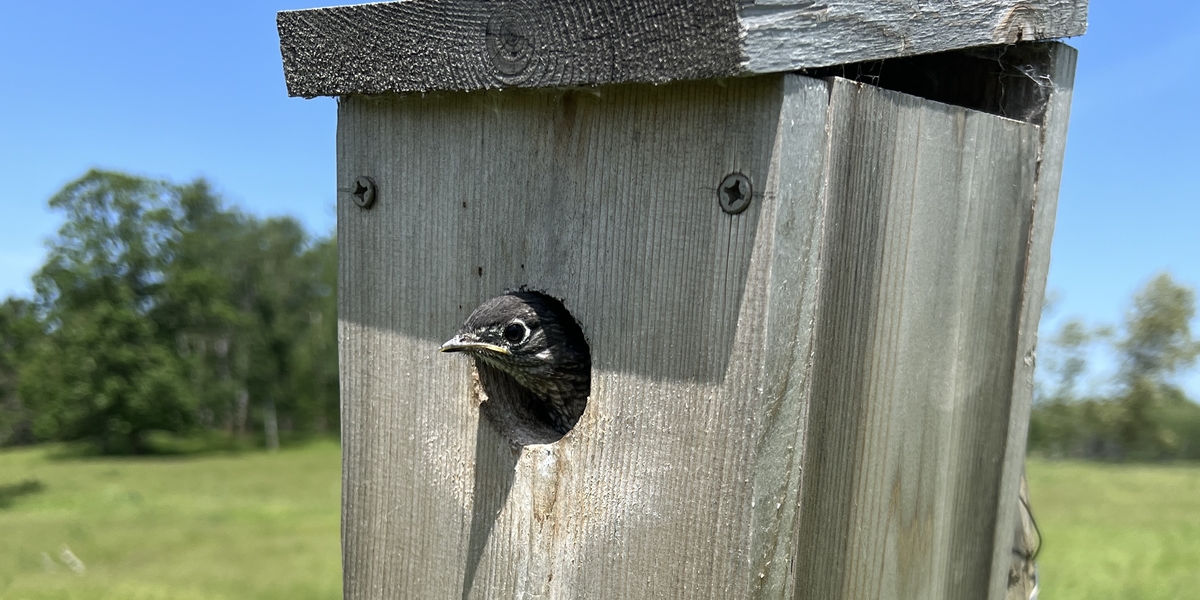
To some people living near the Itasca Biological Station and Laboratories, Sarah Knutie is known as the “Bluebird Girl.” That’s because Knutie, an associate professor at the University of Connecticut, has installed and monitored nest boxes for eastern bluebirds and tree swallows in the area since 2014. Every year, she adds more boxes, which now number more than 200. Many are located in backyards and sometimes when Knutie can’t observe what’s happening with the nests the ever-enthusiastic property owners check and report back.
The nestlings and their parents are not alone in the boxes. They are accompanied by blowflies, parasitic insects that, as larvae, bite and suck blood from the birds. Knutie investigates how environmental factors like temperature impact the relationship between these parasites and their hosts. The work requires persistent observations during the nesting season, often every other day. This is considerable given that it takes two full days to make a complete round of the boxes. The team collects body measurements, drop-sized blood samples and other data.
For a recent publication in Oecologia, the researchers manipulated the temperature in a portion of the boxes by lifting each nest with a metal spatula and placing a heat pack underneath. They replaced the packs every other day to maintain the target temperature. The paper’s lead author was Lauren Albert, a former undergraduate student in Knutie’s lab. Their findings revealed that tree swallows had fewer parasites in heated nests than in unheated ones. Meanwhile, bluebirds had more parasites in heated nests. Trends for survival rate and body measurements also varied between the species. The differences suggest that in a changing climate, some species will benefit while others will not.
Knutie first came to Itasca Biological Station and Laboratories in 2004 as an undergraduate student majoring in Ecology, Evolution and Behavior. She took summer field courses in animal behavior and ornithology and, with instructor encouragement, came to recognize her knack for identifying bird songs and calls. “I guess the rest is history,” she laughs.
After collecting data from the Itasca nest boxes for four seasons, Knutie launched a larger bluebird project in 2018: the Nest Parasite Community Science Program. The program involves around 150 backyard volunteers who monitor 3,000 nest boxes across the eastern United States. Now, with support from the National Science Foundation, Knutie has coordinated a group of professors who will work with undergraduates to conduct temperature experiments at these far-flung sites. “We’re trying to explain why we see differences in parasite communities and abundance across the range of the hosts,” Knutie says.
When Knutie returned to Itasca this spring, she began preparations for the large collaborative project, which officially commences next year. She swapped out old boxes, added new ones, and tracked the returning birds. Of course, she also spent time catching up with the property owners, among her first bluebird friends.
— Jonathan Damery